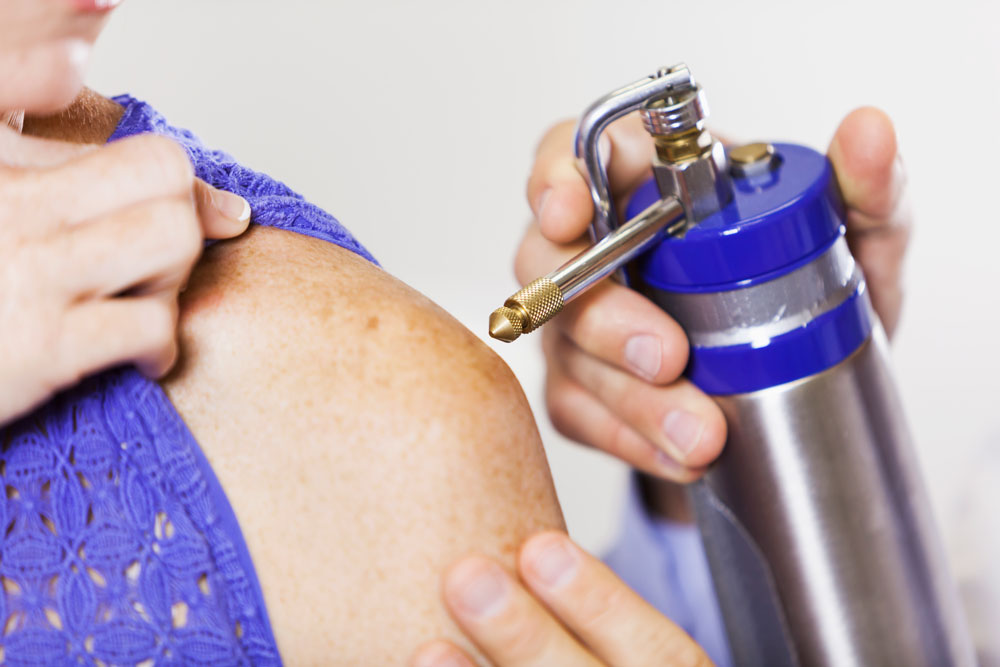Cryotherapy is a simple and minimally invasive topical treatment that is used extensively in practice. Cryotherapy is a non-surgical procedure that removes ‘sunspots’ (pre-cancerous solar keratoses) and small superficial skin cancers (such as superficial BCC and intra-epidermal carcinoma) through the use of an extremely cold liquid (most commonly liquid nitrogen). This freezes and destroys the abnormal tissue. It is a relatively inexpensive, safe and reliable procedure.
What is Cryotherapy
Why Do I Need Cryotherapy
Cryotherapy is an appropriate treatment for some benign skin lesions, most pre-cancerous skin lesions, and some types of superficial skin cancers.
Cryotherapy is commonly used on pre-cancerous solar keratoses on all parts of the body, including the scalp, face, neck, hands, limbs and torso.
Cryotherapy is sometimes used on superficial skin cancers on the limbs and torso. It is not commonly used for skin cancers on the face due to the risk of leaving a cosmetically unacceptable depigmented scar.


What is the Procedure
Your skin cancer doctor will usually spray (or less commonly apply by using a swab) the cold liquid onto the sunspot or skin cancer for a few seconds or longer depending on the type and size of the lesion.
This freezes and kills the skin cells and a wound forms. A burning or stinging sensation may be felt during and following the procedure for 10-15 minutes and persist as a mild discomfort for up to 48 hours. If required, pain killers like paracetamol are recommended. The process may need to be repeated in some cases.
What Happens Next?
As cryotherapy is a minimally invasive procedure, limited aftercare is required.
The area will be painful and a blister will form which will need to be kept clean. Normal daily washing will be sufficient care. Only use a dressing if the affected area is subject to trauma or clothing rubbing on it, or if the area weeps.
Your skin cancer doctor may recommend a simple analgesic such as paracetamol.
After a few days, the area will dry to form a scab. Avoid picking at this scab. The scab will normally peel off after about 10 days for treated areas on the face and scalp and after 2-3 weeks on the hands. Healing on the lower leg is often slower than other parts of the body, where the scab may take up to 2-3 months to heal.
A wound infection may occur rarely. If there is increasing pain, swelling, surrounding redness, or the formation of a yellow discharge (pus), consult your treating doctor.
A pale depigmented area (scar) may be left at the treatment site.
No leave from work or study is usually required during the healing phase.

BOOK NOW
Our handpicked team of doctors, nurses and health professionals are here to make a meaningful difference to your life, at every stage of your life.

